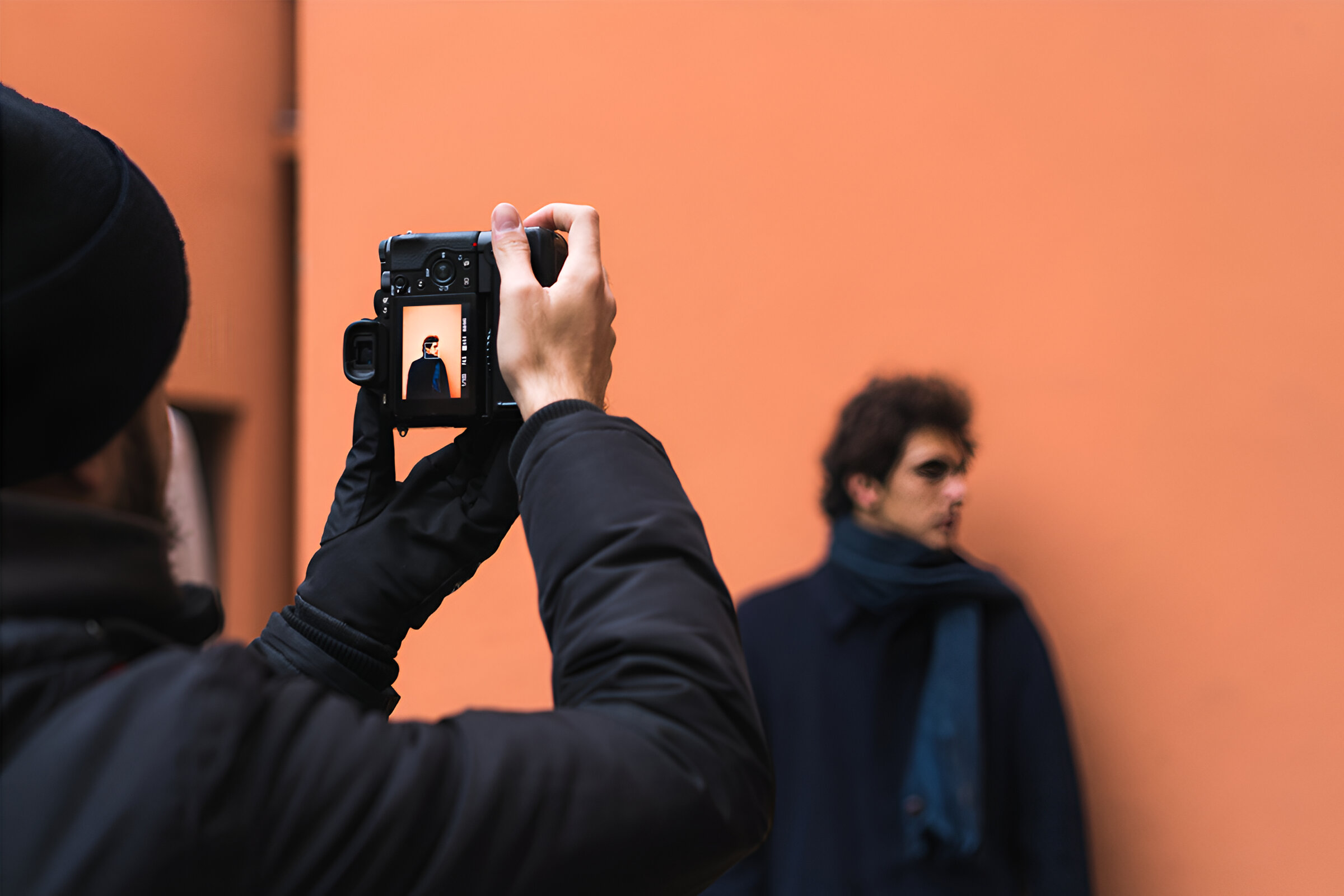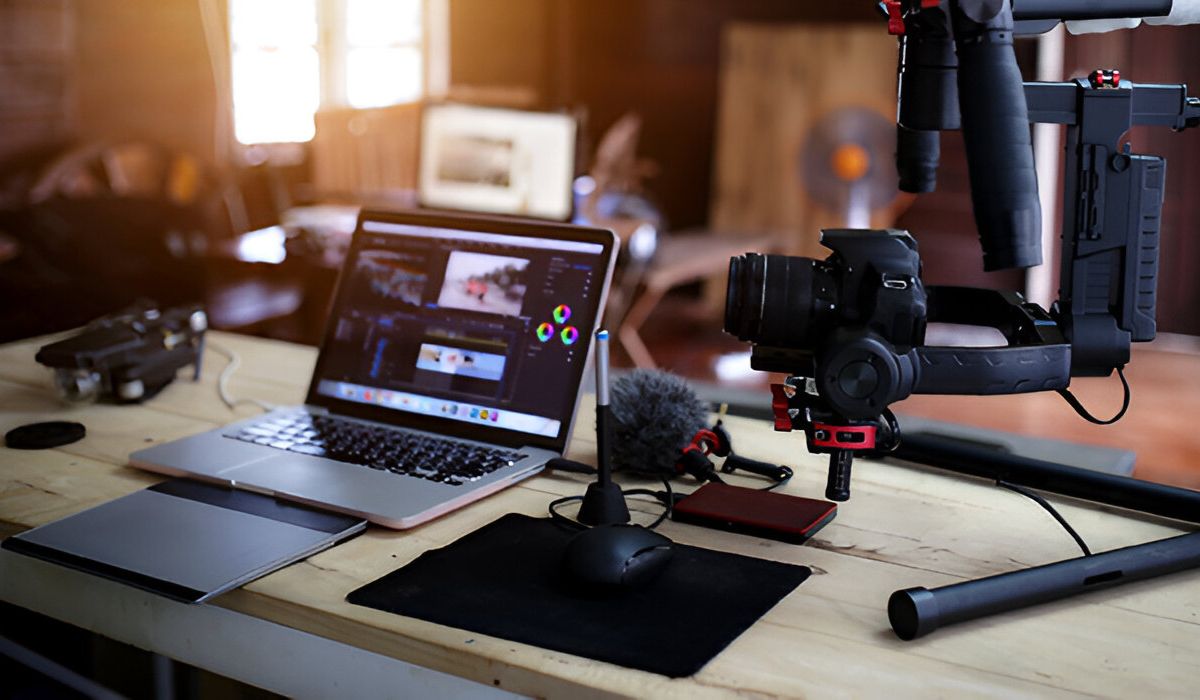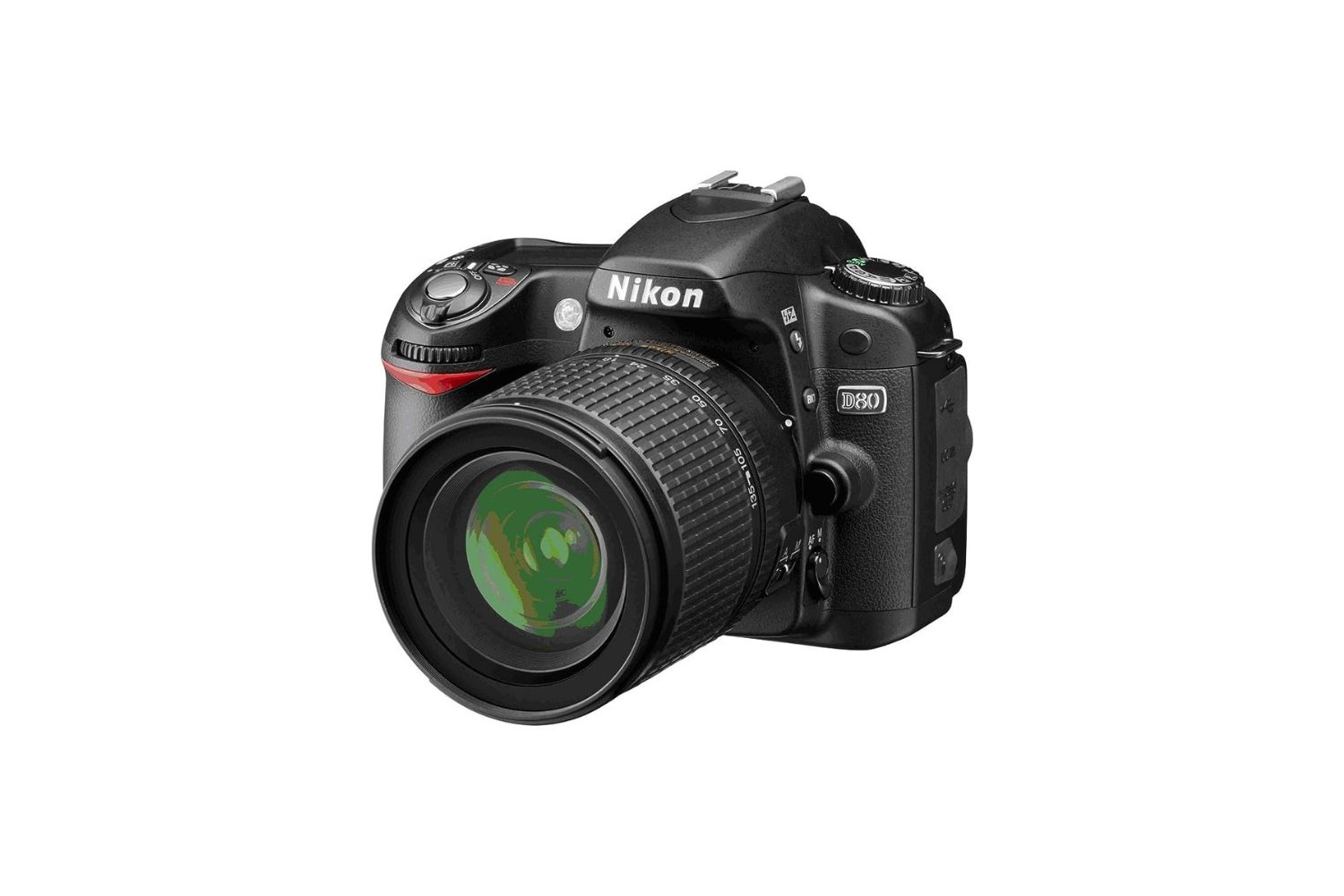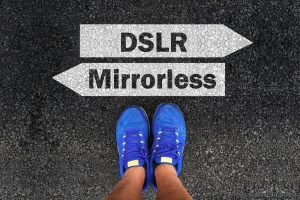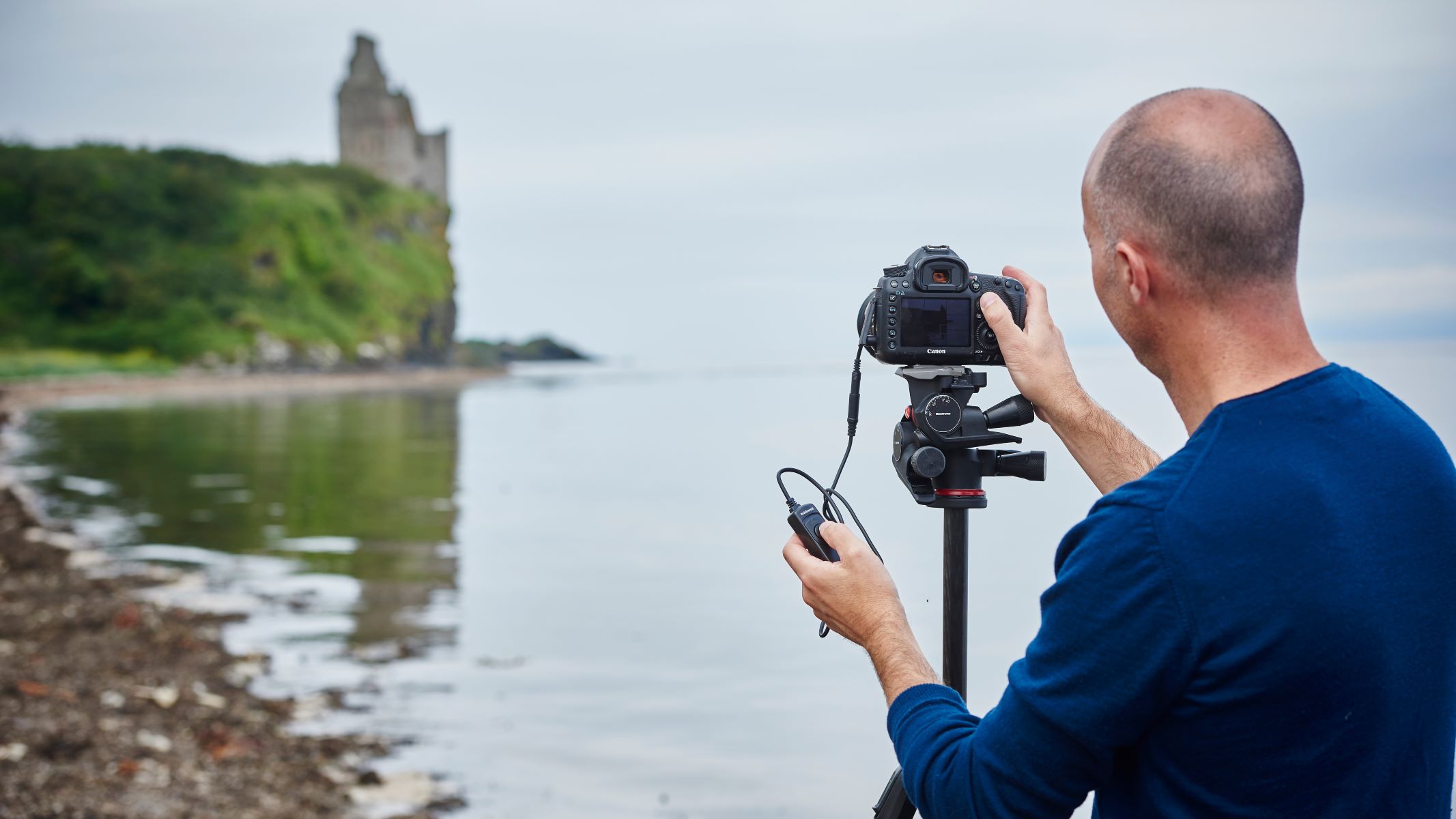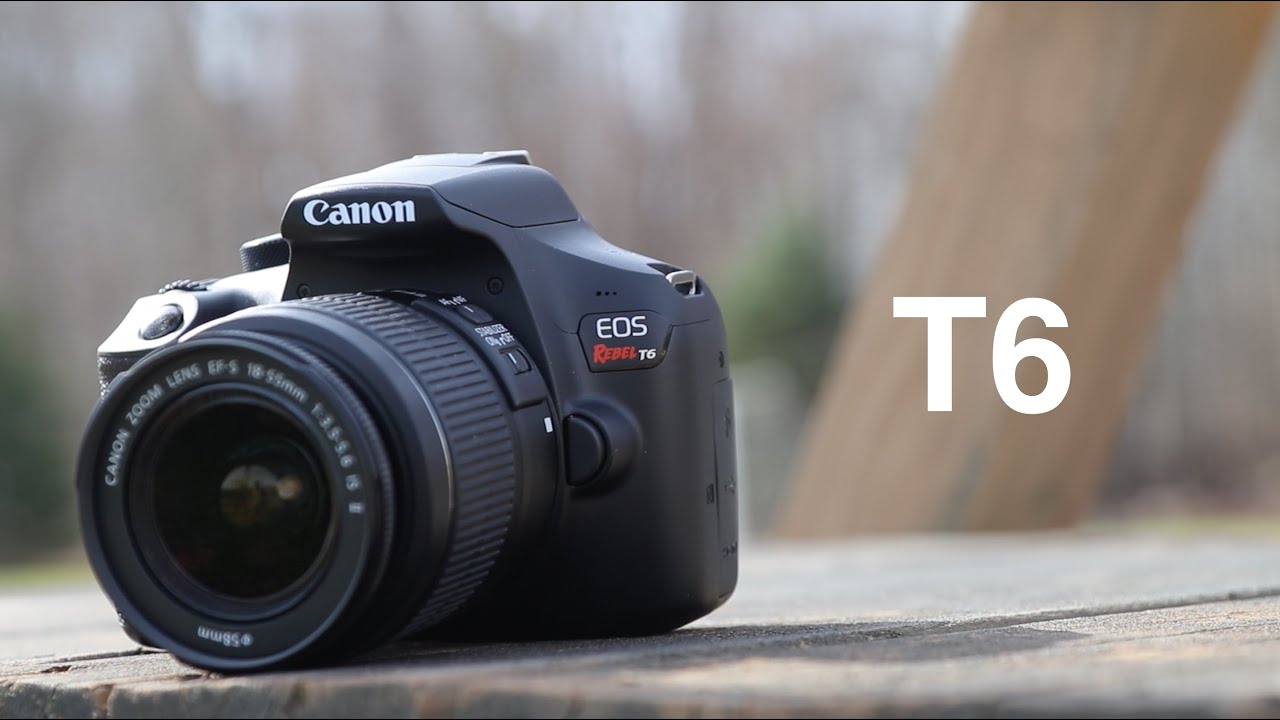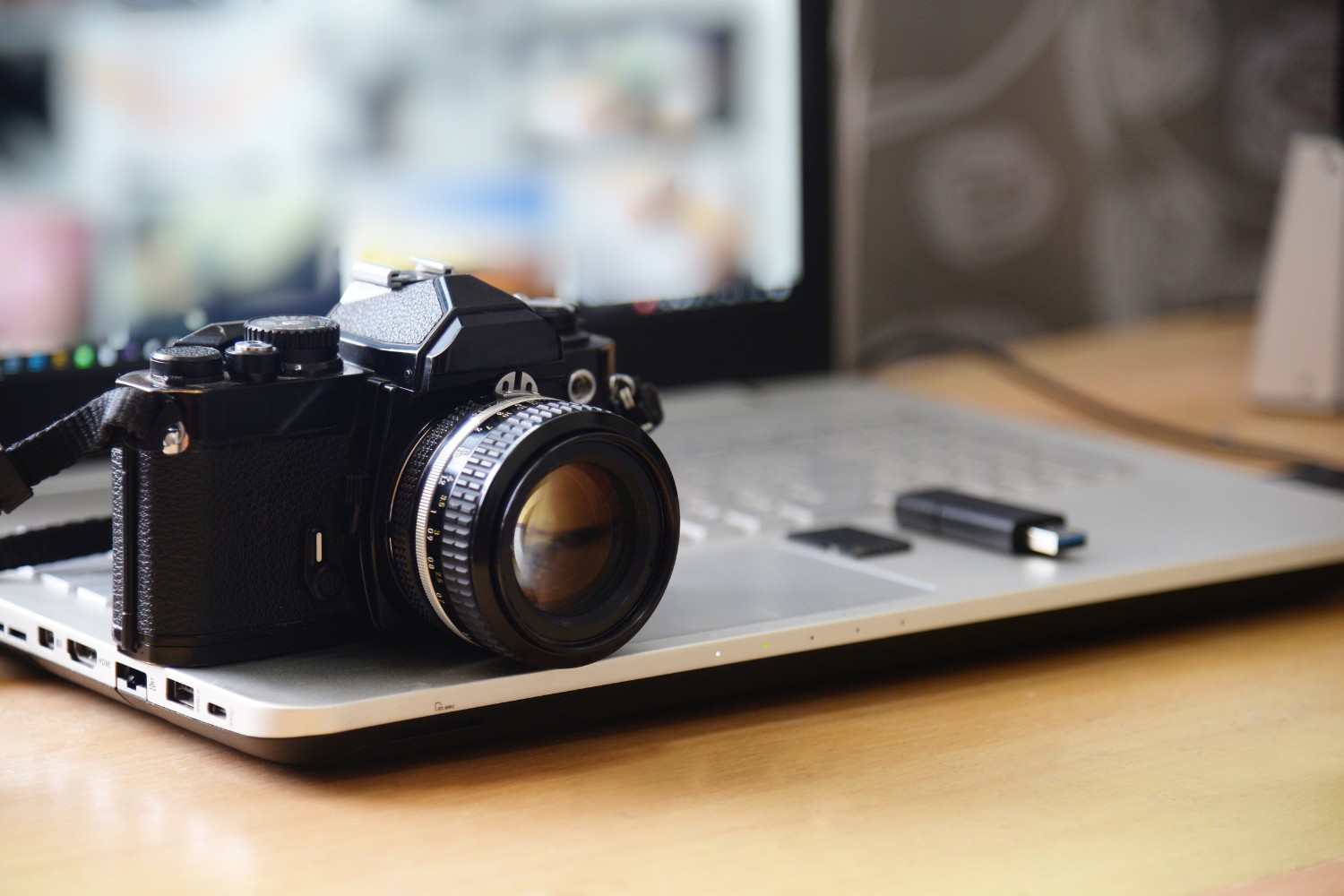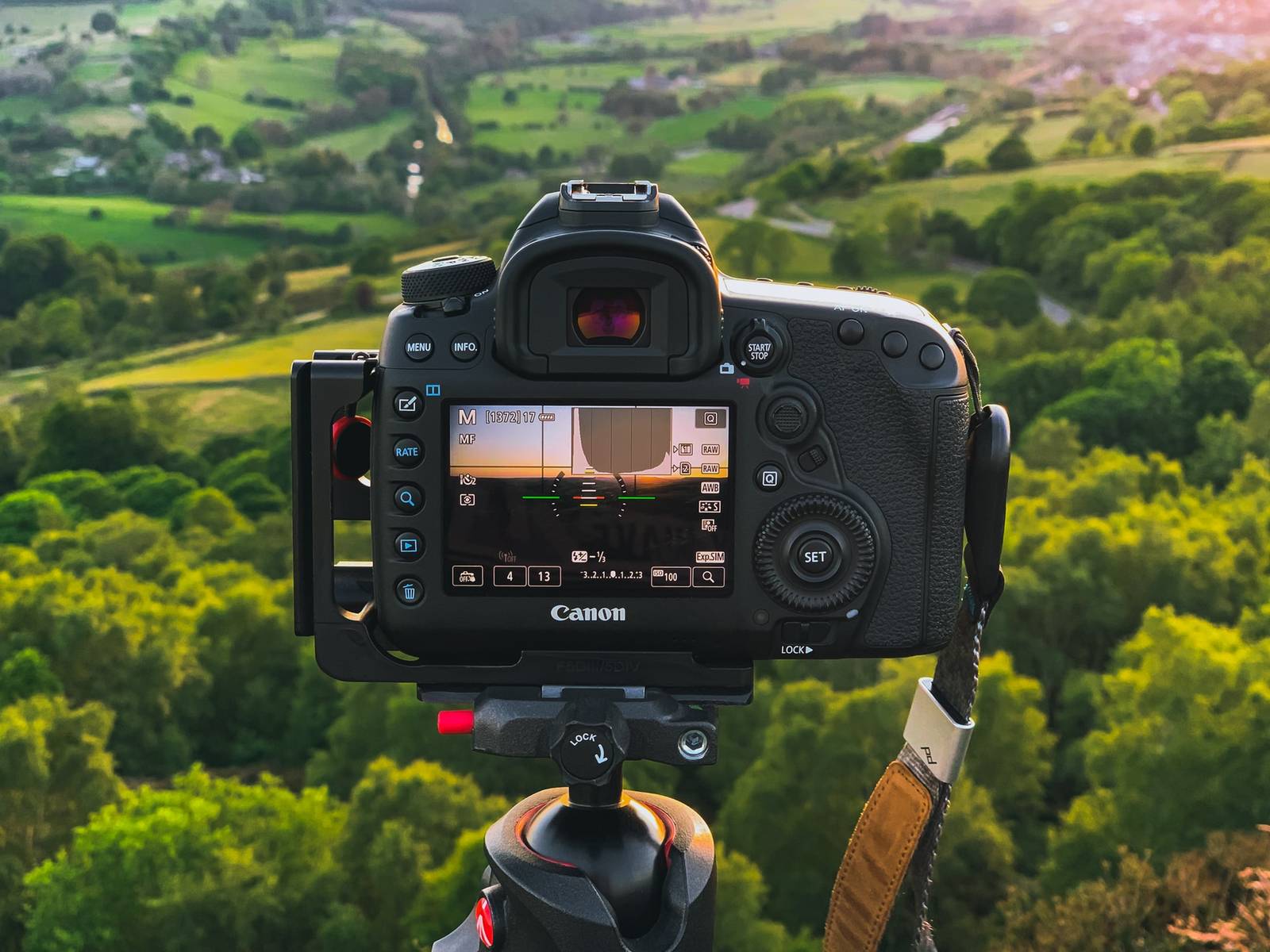Introduction
Understanding the Basics of DSLR Photography
So, you've got your hands on a DSLR camera, and you're ready to take your photography skills to the next level. Congratulations! A DSLR (Digital Single-Lens Reflex) camera is a powerful tool that allows you to unleash your creativity and capture stunning images with precision and control. Whether you're a hobbyist looking to improve your photography or an aspiring professional photographer, mastering the art of DSLR photography can open up a world of creative possibilities.
In this comprehensive guide, we'll delve into the fundamentals of DSLR photography and equip you with the knowledge and techniques to elevate your photography game. From understanding the key features of your DSLR camera to mastering exposure, utilizing the right lenses, and harnessing the power of lighting and composition, this guide will provide you with invaluable insights to help you take better pictures and unleash your creative vision.
Photography is not just about capturing moments; it's about storytelling through visuals. With a DSLR camera, you have the ability to control every aspect of the image, from the depth of field to the exposure settings, allowing you to craft visually compelling narratives through your photographs. Whether you're passionate about landscapes, portraits, macro photography, or any other genre, a DSLR camera empowers you to explore and express your unique perspective through your lens.
As we embark on this journey to enhance your DSLR photography skills, keep in mind that practice and experimentation are key. Don't be afraid to push the boundaries, try new techniques, and learn from both successes and failures. Photography is an art form, and like any art, it requires dedication, patience, and a willingness to continuously learn and grow.
So, grab your DSLR camera, unleash your creativity, and let's dive into the world of DSLR photography, where every click of the shutter holds the potential to capture a masterpiece. Let's embark on this exciting journey to unlock the full potential of your DSLR camera and elevate your photography to new heights.
Understanding Your DSLR Camera
Before delving into the intricacies of DSLR photography, it’s essential to develop a comprehensive understanding of your DSLR camera’s features and functionalities. A DSLR camera is a sophisticated piece of technology that offers a wide array of settings and controls, empowering you to capture images with unparalleled clarity and creative expression.
At the core of a DSLR camera is its optical system, which includes a mirror and a pentaprism or pentamirror. This system allows you to view the scene through the lens via the optical viewfinder, providing a direct, real-time preview of your subject. Understanding this optical pathway is crucial as it forms the basis of the DSLR’s unique shooting experience.
One of the defining features of a DSLR camera is its interchangeable lens system, which enables you to adapt to various shooting scenarios by using different lenses. From wide-angle lenses for expansive landscapes to telephoto lenses for capturing distant subjects, the versatility of lens options empowers you to expand your creative horizons and achieve diverse photographic effects.
Furthermore, familiarizing yourself with the camera’s physical controls, such as the shutter button, mode dial, and various function buttons, is vital for seamless operation. Each control plays a specific role in adjusting exposure settings, focus modes, and shooting parameters, allowing you to tailor the camera’s performance to suit your creative vision.
Additionally, comprehending the concept of exposure triangle, which comprises aperture, shutter speed, and ISO sensitivity, is fundamental to mastering DSLR photography. These three elements interplay to determine the overall exposure of your images, and understanding how to manipulate them effectively will significantly enhance your ability to capture well-exposed and visually compelling photographs.
As you embark on your journey with a DSLR camera, take the time to explore its menu system, familiarize yourself with its autofocus modes, and experiment with different shooting modes, such as aperture priority, shutter priority, and manual mode. Embracing the technical aspects of your camera will empower you to harness its full potential and elevate your photography skills.
By understanding the intricacies of your DSLR camera, you’ll lay a solid foundation for unlocking its creative capabilities and capturing images that resonate with your artistic vision. Remember, your DSLR camera is not just a tool; it’s a gateway to boundless creative expression, and by mastering its features, you’ll embark on a transformative journey in the world of photography.
Mastering Exposure
Exposure is a fundamental aspect of photography, and mastering it is crucial for achieving well-balanced and visually captivating images with your DSLR camera. Understanding the interplay between aperture, shutter speed, and ISO sensitivity, often referred to as the exposure triangle, is essential for achieving optimal exposure in various lighting conditions.
Aperture, the opening in the lens through which light passes, not only controls the amount of light entering the camera but also influences the depth of field in your images. By adjusting the aperture, you can create striking visual effects, such as a shallow depth of field for captivating portraits or a deep depth of field for sweeping landscapes.
Shutter speed, on the other hand, determines the duration for which the camera’s shutter remains open, allowing light to reach the camera’s sensor. Mastering shutter speed is crucial for freezing fast-moving subjects with a fast shutter speed or capturing the graceful motion blur of flowing water or moving subjects with a slower shutter speed.
ISO sensitivity dictates the camera sensor’s responsiveness to light, and understanding how to leverage ISO settings enables you to adapt to low-light environments without compromising image quality. However, it’s important to note that higher ISO settings may introduce digital noise, so finding the optimal balance between ISO and image quality is key to achieving exceptional results.
Furthermore, exposure metering modes, such as evaluative, spot, and center-weighted metering, play a pivotal role in determining how the camera measures and calculates exposure. Familiarizing yourself with these metering modes empowers you to make informed decisions about exposure settings based on the lighting conditions and the desired creative outcome.
Utilizing exposure compensation allows you to fine-tune the camera’s automatic exposure settings, enabling you to adjust the brightness of your images to achieve the desired aesthetic. This feature is particularly valuable in situations where the camera’s metering may misinterpret the scene, giving you the flexibility to override the automatic settings and achieve the perfect exposure.
By mastering the intricacies of exposure, you’ll gain the confidence to adapt to diverse lighting scenarios and capture images with exquisite tonal range and visual impact. Whether you’re photographing a radiant sunset, a bustling cityscape, or a serene portrait, a thorough understanding of exposure will empower you to translate your creative vision into compelling photographs.
Using the Right Lenses
Choosing the right lens for your DSLR camera is a critical decision that significantly influences the visual impact and creative potential of your photographs. The versatility and specific characteristics of different lenses offer photographers the opportunity to explore diverse perspectives, focal lengths, and artistic expressions, making it essential to understand the role of various lenses in capturing compelling images.
One of the most popular and versatile lenses is the standard zoom lens, typically covering a focal length range from wide-angle to moderate telephoto. This type of lens is well-suited for a wide range of photography genres, including landscapes, portraits, and everyday snapshots, making it an ideal choice for beginners and enthusiasts seeking a versatile, all-purpose lens.
For photographers passionate about capturing expansive vistas and dramatic landscapes, wide-angle lenses provide a unique perspective by encompassing a broad field of view. These lenses excel in emphasizing spatial relationships and creating visually immersive compositions, making them indispensable for landscape, architectural, and interior photography.
On the other end of the focal length spectrum, telephoto lenses offer powerful magnification, allowing photographers to bring distant subjects closer and isolate specific details with precision. Wildlife photography, sports events, and portrait photography are just a few examples of genres where the reach and compression of telephoto lenses enable photographers to capture compelling, intimate moments from a distance.
For those intrigued by the intricacies of macro photography, dedicated macro lenses unlock a mesmerizing world of close-up photography, revealing intricate details and textures that are often overlooked by the naked eye. From capturing the delicate beauty of flowers to exploring the mesmerizing world of insects and small creatures, macro lenses enable photographers to delve into a realm of exquisite visual storytelling.
Prime lenses, characterized by a fixed focal length, offer exceptional optical performance, often delivering superior sharpness, clarity, and low-light capabilities. These lenses encourage photographers to refine their composition skills and creatively frame their subjects, making them an ideal choice for portrait, street, and documentary photography where precision and artistic expression are paramount.
By understanding the unique characteristics and creative potential of different lenses, you can strategically select the right lens for each photographic scenario, unleashing your creativity and capturing images that resonate with your artistic vision. Whether you’re seeking expansive vistas, intimate details, or captivating portraits, the right lens is a powerful tool that empowers you to craft visually compelling narratives through your photography.
Composition Techniques
Composition is the art of arranging elements within a frame to create visually engaging and impactful photographs. Mastering composition techniques is essential for transforming ordinary scenes into compelling visual narratives, allowing you to convey emotion, perspective, and storytelling through your images. By understanding and applying fundamental composition principles, you can elevate the aesthetic appeal and communicative power of your photographs.
The rule of thirds is a foundational principle that divides the frame into a 3×3 grid, with key elements placed along the gridlines or at their intersections. This technique encourages dynamic and balanced compositions, guiding the viewer’s gaze and adding visual interest to the image. By strategically positioning your subject or points of interest along these gridlines, you can create visually harmonious and engaging compositions.
Leading lines are a powerful compositional tool that draws the viewer’s eye into the image, guiding their visual journey through the photograph. Whether it’s a meandering path, a winding river, or converging architectural lines, leveraging leading lines adds depth, movement, and a sense of direction to your compositions, inviting the viewer to explore the visual narrative within the frame.
Understanding the concept of negative space and its role in composition is crucial for creating visually impactful and emotionally evocative images. Negative space refers to the empty or unoccupied areas within the frame, and by skillfully incorporating negative space, you can accentuate the main subject, evoke a sense of solitude or contemplation, and imbue your compositions with a captivating sense of balance and simplicity.
Exploring the interplay of light and shadow, known as chiaroscuro, offers photographers a compelling means of sculpting the visual narrative within their images. By strategically leveraging contrast and shadow to create dramatic and evocative compositions, you can infuse your photographs with depth, mystery, and a mesmerizing interplay of light and darkness, adding a layer of visual intrigue to your storytelling.
Additionally, understanding the concept of visual weight and balance enables photographers to create harmonious and visually compelling compositions. Whether through the strategic placement of elements, the use of color contrast, or the manipulation of scale and perspective, mastering visual weight and balance empowers you to orchestrate the elements within the frame, guiding the viewer’s gaze and creating a sense of equilibrium and cohesion within the image.
By incorporating these composition techniques into your photographic practice, you can infuse your images with a captivating sense of visual storytelling, emotional resonance, and aesthetic allure. Whether you’re capturing breathtaking landscapes, intimate portraits, or dynamic street scenes, mastering composition techniques empowers you to craft images that resonate with depth, impact, and artistic vision.
Lighting Tips
Lighting is a cornerstone of photography, wielding immense influence over the mood, atmosphere, and visual impact of your images. Whether you’re shooting indoors or outdoors, understanding how to manipulate and harness light is essential for creating captivating and evocative photographs with your DSLR camera. By mastering lighting techniques, you can elevate the aesthetic quality and emotional resonance of your images, bringing your creative vision to life.
Golden hour, the magical period shortly after sunrise or before sunset, bathes the landscape in warm, soft light, casting enchanting hues and creating a captivating interplay of light and shadow. Embracing the golden hour allows photographers to capture scenes with a mesmerizing, ethereal quality, enhancing the mood and visual allure of their images. Whether you’re photographing landscapes, portraits, or urban scenes, the golden hour offers an exquisite canvas for evocative storytelling.
Understanding the principles of natural light and its dynamic qualities empowers photographers to adapt to changing lighting conditions and leverage the inherent beauty of ambient light. Whether it’s the soft, diffused light of an overcast day or the dramatic, directional light of a clear, sunny sky, mastering natural light enables you to sculpt the visual narrative within your images, infusing them with depth, texture, and emotive resonance.
Utilizing artificial lighting, such as external flashes, continuous lights, or studio strobes, provides photographers with precise control over the illumination of their subjects, allowing for creative manipulation of light and shadow. Whether you’re engaging in studio portraiture, product photography, or conceptual visual storytelling, the strategic use of artificial lighting opens up a realm of creative possibilities, enabling you to craft meticulously lit and visually striking compositions.
Exploring the concept of backlighting, where the primary light source is positioned behind the subject, yields captivating results by creating a luminous halo effect, emphasizing silhouettes, and infusing the scene with a sense of depth and radiance. By skillfully harnessing backlighting, photographers can imbue their images with a captivating, ethereal quality, adding a touch of enchantment and visual allure to their compositions.
Understanding the nuances of color temperature and white balance enables photographers to accurately capture and convey the true-to-life colors and ambience of a scene. Whether it’s the warm, golden tones of candlelight or the cool, serene hues of twilight, mastering color temperature and white balance empowers you to faithfully represent the emotional and aesthetic essence of the light in your photographs.
By embracing these lighting tips and techniques, you can harness the transformative power of light to elevate your photography, infusing your images with mood, drama, and visual poetry. Whether you’re capturing natural landscapes, intimate portraits, or dynamic urban scenes, the artful manipulation of light empowers you to craft images that resonate with depth, emotion, and timeless allure.
Using Manual Mode
Manual mode is a powerful tool in a photographer’s arsenal, offering complete control over exposure settings and enabling precise adjustments to capture the perfect image in any lighting condition. While automatic and semi-automatic modes provide convenience, mastering manual mode empowers photographers to unleash their creativity and achieve unparalleled precision in their photography.
One of the key advantages of using manual mode is the ability to fine-tune exposure settings, including aperture, shutter speed, and ISO sensitivity, to suit the specific requirements of a scene. This level of control allows photographers to craft images with optimal exposure, ensuring that every aspect of the photograph, from depth of field to motion blur, aligns with their creative vision.
Manual mode also encourages a deeper understanding of the exposure triangle, fostering a more intimate connection with the technical aspects of photography. By actively adjusting the aperture to control depth of field, manipulating shutter speed to freeze or blur motion, and optimizing ISO sensitivity to manage low-light conditions, photographers develop a profound mastery of exposure principles that transcends the limitations of automatic modes.
Moreover, manual mode empowers photographers to overcome challenging lighting situations, such as high-contrast scenes or mixed lighting environments, by strategically balancing exposure settings to preserve highlight and shadow detail. This level of adaptability ensures that photographers can confidently capture scenes with diverse tonal ranges and complex lighting conditions, transcending the constraints of automatic exposure algorithms.
Embracing manual mode also fosters a deeper connection with the creative process, instilling a sense of intentionality and mindfulness in every photograph. By actively manipulating exposure settings to achieve the desired aesthetic and visual impact, photographers cultivate a heightened awareness of the nuances of light, composition, and storytelling, elevating their images to a realm of artistic expression and technical mastery.
Furthermore, manual mode encourages experimentation and creative risk-taking, allowing photographers to push the boundaries of traditional exposure norms and explore unconventional techniques to achieve unique and compelling results. Whether it’s deliberately underexposing to create a mood of mystery or intentionally blurring motion to convey a sense of dynamism, manual mode empowers photographers to embrace creative freedom and express their artistic vision without limitations.
By embracing manual mode, photographers embark on a transformative journey of technical mastery and creative liberation, transcending the constraints of automatic settings and unlocking the full potential of their DSLR cameras. Whether capturing breathtaking landscapes, intimate portraits, or dynamic street scenes, the art of manual exposure empowers photographers to craft images that resonate with precision, intention, and profound artistic expression.
Post-Processing Tips
Post-processing is an integral part of the photographic workflow, offering photographers the opportunity to refine and enhance their images to achieve the desired visual impact and aesthetic quality. Whether it’s adjusting exposure, fine-tuning colors, or applying creative effects, mastering post-processing techniques allows photographers to elevate their images to new heights of artistic expression and visual allure.
Utilizing non-destructive editing software, such as Adobe Lightroom or Capture One, provides photographers with a flexible and comprehensive platform for organizing, editing, and enhancing their images. These tools offer a wide range of adjustment options, including exposure, contrast, color balance, and selective retouching, empowering photographers to meticulously refine their images with precision and control.
Understanding the principles of non-destructive editing is essential for preserving the integrity of the original image while making adjustments. By working with adjustment layers, virtual copies, and smart objects, photographers can experiment with various editing techniques without irreversibly altering the original image, ensuring that every adjustment is flexible and reversible throughout the post-processing workflow.
Mastering the art of color grading enables photographers to imbue their images with a distinctive visual style and mood, elevating the emotional resonance and aesthetic allure of their photographs. Whether it’s creating a vibrant, cinematic look with bold colors or evoking a timeless, monochromatic aesthetic, color grading empowers photographers to infuse their images with a captivating sense of visual storytelling and artistic expression.
Applying selective adjustments, such as localized dodging and burning, graduated filters, and targeted sharpening, allows photographers to direct the viewer’s gaze and enhance specific areas of their images with precision. These nuanced adjustments enable photographers to sculpt the visual narrative within their photographs, drawing attention to key elements and imbuing the scene with depth, dimension, and emotive impact.
Embracing the creative potential of post-processing effects, such as vintage film simulations, dramatic black and white conversions, or ethereal texture overlays, offers photographers the opportunity to transcend traditional representations and infuse their images with a touch of artistic experimentation and visual poetry. By exploring these creative effects, photographers can breathe new life into their images, adding a layer of evocative storytelling and aesthetic allure.
By embracing these post-processing tips and techniques, photographers can refine and elevate their images to convey their artistic vision with precision, intention, and profound emotional resonance. Whether capturing natural landscapes, intimate portraits, or dynamic urban scenes, the art of post-processing empowers photographers to craft images that resonate with timeless allure and captivating visual storytelling.







